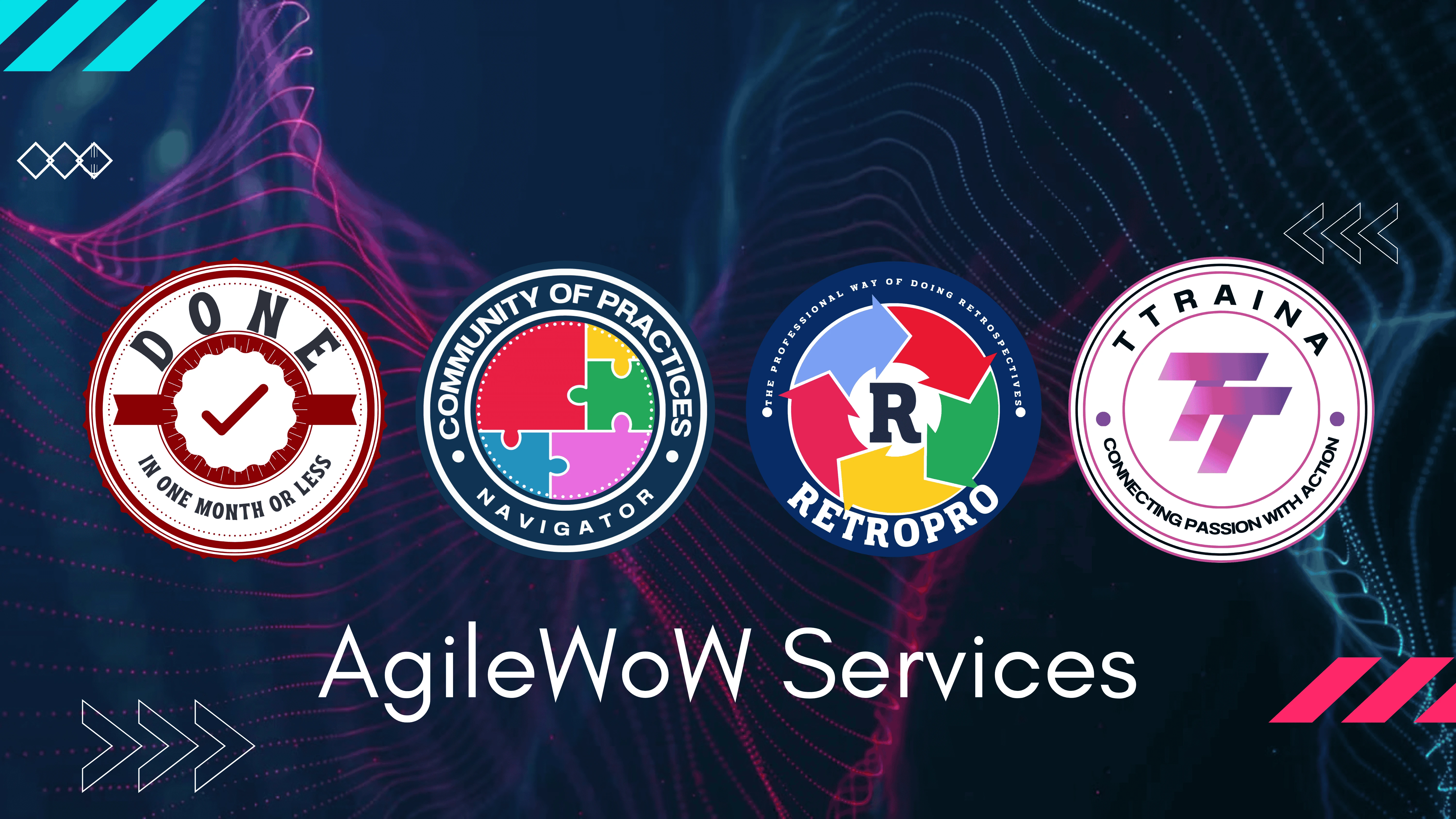AgileWoW - Agile Metrics Cheat Sheet
This cheat sheet provides a quick reference to common Agile metrics, categorized to help teams understand and improve their performance, process, and product.
Flow Metrics
Flow metrics focus on the movement of work through the development process. They help identify bottlenecks and optimize the delivery pipeline.
-
Lead Time
Definition: The total time elapsed from when a work item is requested (added to the backlog) to when it is completed and delivered.
Purpose: Measures the overall efficiency of the value stream and responsiveness to customer needs. Shorter lead time generally indicates a more efficient process.
Calculation: Completion Date - Request Date
-
Cycle Time
Definition: The time elapsed from when work *begins* on a work item to when it is completed and ready for delivery.
Purpose: Focuses on the efficiency of the active working process, excluding waiting time in the backlog. Helps identify bottlenecks within the active workflow.
Calculation: Completion Date - Start Date of Active Work
-
Throughput
Definition: The number of work items completed within a specific time period (e.g., per sprint, per week).
Purpose: Measures the team's capacity and delivery rate. Useful for forecasting and understanding how much work the team can handle.
-
Work in Progress (WIP)
Definition: The number of work items that have been started but are not yet completed.
Purpose: High WIP can indicate bottlenecks, context switching, and reduced efficiency. Limiting WIP helps teams focus and finish work before starting new tasks.
-
Cumulative Flow Diagram (CFD)
Definition: A stacked area chart that visualizes the amount of work in different states (e.g., To Do, In Progress, Done) over time.
Purpose: Provides a holistic view of the workflow, showing bottlenecks (widening bands), lead time (horizontal distance between bands), and cycle time.
Quality Metrics
Quality metrics assess the quality of the delivered product and the development process.
-
Escaped Defects
Definition: The number of defects found in production or by the customer after a release.
Purpose: Measures the effectiveness of testing and quality assurance efforts within the development process. Lower numbers indicate higher quality delivered.
-
Code Coverage
Definition: The percentage of code that is executed by automated tests.
Purpose: While not a direct measure of quality, it indicates the thoroughness of the test suite. Higher coverage can correlate with fewer defects, but doesn't guarantee quality.
-
Failed Deployments
Definition: The number or percentage of deployments to production that fail.
Purpose: Indicates the stability and reliability of the deployment process and the quality of the build being deployed.
-
Defect Density
Definition: The number of defects per unit of code size (e.g., per thousand lines of code).
Purpose: Provides a measure of the quality of the codebase. Can be tracked over time to see if quality is improving or degrading.
Value Metrics
Value metrics focus on the business value delivered to the customer and stakeholders.
-
Value Delivered
Definition: A measure of the tangible business or customer value delivered by the team, often assessed based on completed features or epics prioritized by value.
Purpose: Ensures the team is working on the most impactful items and delivering value aligned with business objectives.
-
Net Promoter Score (NPS)
Definition: A customer satisfaction metric that measures the likelihood of customers recommending the product or service to others.
Purpose: A proxy for customer happiness and the perceived value of the product.
-
Customer Satisfaction (CSAT)
Definition: A direct measure of customer satisfaction, often collected through surveys.
Purpose: Gathers feedback on how well the product or service is meeting customer expectations.
Team Health & Performance Metrics
These metrics provide insights into the team's well-being, collaboration, and ability to deliver predictably.
-
Velocity
Definition: The average amount of work (typically measured in story points) a team completes in a sprint.
Purpose: Used for forecasting how much work a team can potentially complete in future sprints and for release planning. It is team-specific and should not be used to compare teams.
-
Sprint Burndown
Definition: A chart that shows the remaining work (in story points or hours) in a sprint over time.
Purpose: Tracks progress within a sprint and helps identify if the team is on track to complete the committed work.
-
Release Burndown/Burnup
Definition: Charts that track the remaining work (burndown) or completed work (burnup) for an entire release over time.
Purpose: Provides a high-level view of progress towards a release goal and helps forecast the release date.
-
Sprint Goal Success Rate
Definition: The percentage of sprints in which the team successfully meets its sprint goal.
Purpose: Measures the team's ability to plan and deliver on their commitments.
-
Team Happiness
Definition: A subjective measure of how the team members feel about their work, the process, and the project. Often collected through regular surveys or check-ins.
Purpose: Happy teams are often more productive and engaged. This metric helps identify areas for improvement in team dynamics and the working environment.

Using Agile Metrics Effectively
- Choose metrics aligned with your goals: Focus on metrics that help you understand and improve against your specific objectives.
- Metrics are for improvement, not judgment: Use metrics to identify areas for improvement and facilitate conversations, not to blame individuals or teams.
- Context is key: Understand the context behind the numbers. Metrics tell a story, but you need to understand the "why" behind the trends.
- Visualize your metrics: Use dashboards and charts to make metrics visible and easy to understand for the whole team and stakeholders.
- Review and adapt: Regularly review your metrics and adjust your processes and practices based on the insights gained.
This cheat sheet is a starting point. The most valuable metrics for your team may vary depending on your context, goals, and the Agile framework you are using.

